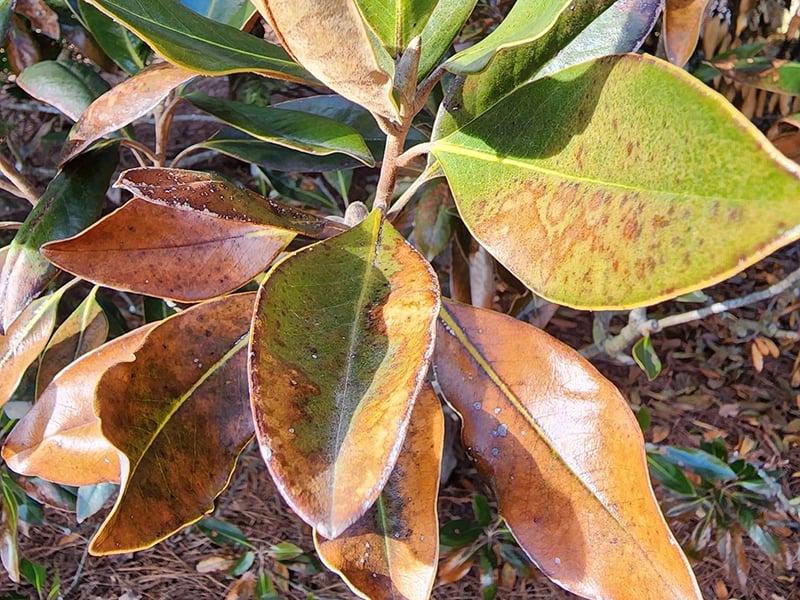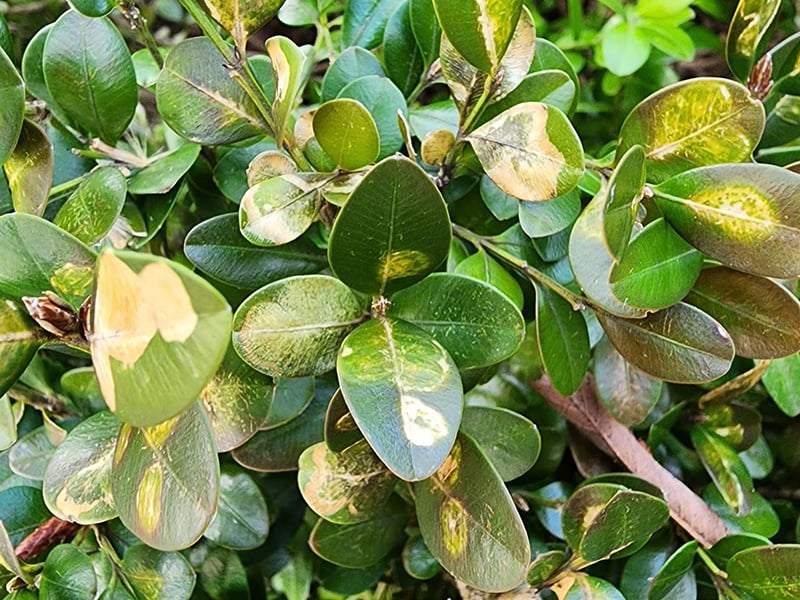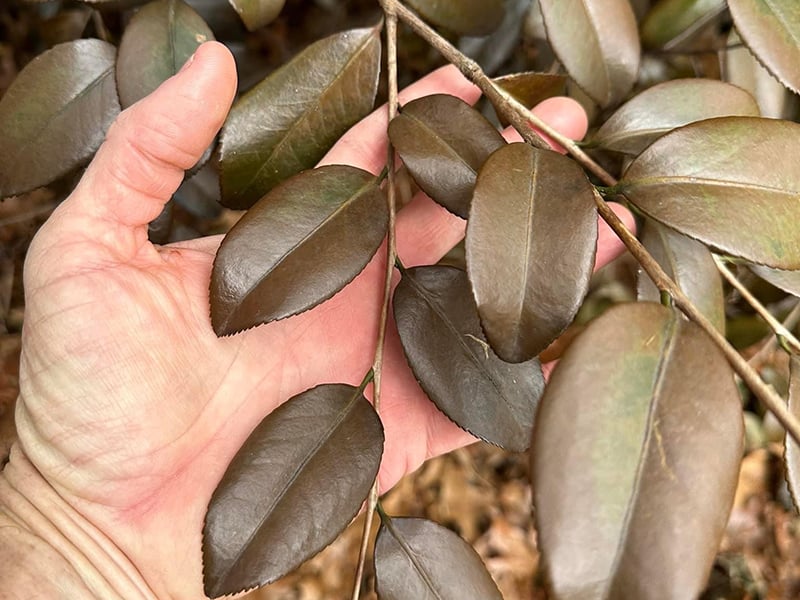Holiday Frost Aftermath
More than a month has passed since the infamous “Holiday Freeze,” when a sudden drop in temperatures led to a lot of damage. Plants that traditionally have been unaffected by cold are showing severe signs of damage that is causing heartache to gardeners across the Southeast.
One thing about weather, it keeps you humble and reminds gardeners we are NOT in control! And I am sure we are not out of the woods yet, as cold air can arrive anytime February and April with little notice!
Extreme temperature fluctuations make it a time of year for gardeners to question everything, especially hardiness of plants, so in this blog we're going to asses the aftermath and give you pointers on what to do next.
Assessing Damage in my Vegetable Garden
As you can imagine a lot of edibles were also impacted by the holiday freeze. I even noticed garlic foliage had burned tips, something I have never seen in my twenty years of gardening in North Carolina.
Cool season heading veggies like broccoli, cabbage, and cauliflower were especially hit hard, with many plants melting completely. Despite my best efforts of cover these varieties I lost most of the crop.
Leafy green fared a bit better, with lettuce as a main exception. The tender, delicious foliage of romaine and other varieties did not survive the cold snap, though I have noticed a few plants are starting to leaf back out from the base. Kale, Swiss chard, and arugula do seem to have better cold hardiness, and though some of their leaves were wilted they have successfully started to grow back out, at least in my zone 7 garden.
The good thing about vegetables is they are easy and inexpensive to grow from seed, so sowing a new crop for spring harvests is the easiest way to navigate the cold damage. Of course the new
Veggie Mix from Soil³ is the ideal media to grow them in, so be sure to get that ordered!
Assessing Ornamental Plant Damage in Zones 7 & 8
The damage in other parts of the Southeast was substantially more than what I am seeing here in the Raleigh, NC area where we got to 11 degreed F with temperatures remaining below freezing for about 60 consecutive hours.
I covered my containers with burlap coffee bean bags with great success!
The main casualties in my garden were the tender poppy seedlings that had JUST germinated before the cold arrived. Distylium shrubs also took a hit here in my warm Zone 7 garden, with most varieties turning brown and dropping their usually evergreen foliage.
My solution: Sow more poppy seed and cut the Distylium to the ground. They will reflush in the spring. You can leave your freeze damaged shrubs as they are until you see spring growth and know for sure where to prune, but mine needed to be cut back anyway so I’m turning this cold damage into a positive!
Though I always recommend sowing poppies after Thanksgiving and BEFORE New Year’s, the holiday freeze is forcing me into January sowing. Time will tell how they perform in the spring!
Assessing Plant Damage in Zone 6 & Colder
Lending his expertise from Nashville, TN is my dear friend, author, and PBS personality Troy Marden. Keep in mind that Tennessee was right in the crosshairs of a perfect storm. Middle Tennessee experienced a 58 degree F temperature drop in under 12 hours, from 54 degrees to -4, accompanied by 30-40 mph winds. Considering the fall was quite mild and the weather leading up to the polar vortex was warm, plants were wholly unprepared.
Troy Marden’s Plant Casualty Report from Nashville
- Southern magnolias, laurels (including the native Carolina cherry laurels), and now, boxwood, are really starting to show damage. I would say 90% of the 'Schip' laurels we've inspected are dead. You can't find any green under the bark at all, anywhere on the plants. 'Otto Luyken' looks slightly better, but not much. Wood is still green, at least. It is not much different for selections of our native Prunus caroliniana like 'Compacta' and Bright 'n' Tight.

- Aucuba plants look like they will need to be cut back hard in most places, but we won't know for sure for a while. Very few green stems and they continue to darken down into the plant.
- Azaleas took a serious hit but are likely to recover. Encores, for the most part, are toast. Even the "hardy" selections look like awful and have very little green wood on them. Older cultivars like ‘Coral Bells’, ‘Delaware Valley White’, ‘ Poukhanense’, ‘Hershey's Red’, and ‘Hino Crimson’ are losing their leaves, but they can do that in cold winters and leaf out fine in the spring. Stems are still green and on many, flower buds still look okay.
- Boxwood damage is showing up in the form of brown leaves and unusual spotting that looks very disease-like but isn't. 'Dee Runk', maybe my favorite cultivar of all (certainly Top 3), looks awful in every landscape.

- Camellias rated for zone 7 hardiness are proving that Nashville is not actually a real zone 7. Weather events like the holiday freeze are when underestimating your REAL zone comes back to bite you! The April Series, which are real zone 6 plants, remain the hardiest for this region. They have been good for 20 years, so if we want camellias, they're still our best choices.

- Distylium sadly are dead as a door nail. It may be good further south, but it has done nothing but struggle every winter here. Foliage burns off and it takes it until the middle of June to recover.
- Illicium floridanum, the native anise shrub, varies with cultivar and with exposure. 'Woodland Ruby' seems to be faring quite well. 'Florida Sunshine' is looking worse by the day.
- Nandinas have completely defoliated, and the stems are starting to dry up. We will not know the full extent of the damage until they start to leaf out in April but based on close examination, a lot of them are frozen at least halfway, if not all the way, to the ground. At the least, we're looking at some very hard pruning.
- Hollies took a hit, but it is species specific! Ilex glabra, the native inkberry holly is fried in most landscapes and dropping leaves fast. Ilex opaca, the native American holly seems okay in most places, so far. The "Red Holly" group has suffered the most. 'Liberty', 'Robin', 'Oakland' have defoliated almost completely. Stems on some are beginning to darken. Time will tell, but I'm most concerned about this group. I love this group of plants and still believe they are good choices for our area and that one freak weather event shouldn't jade us toward them. They've been great for 20+ years and there are no other "tree form" hollies that fill their niche when it comes to mature size. Older, well-established 'Nellie R. Stevens' plants are fine. Hardly any damage. Younger and more recently planted specimSureens are beginning to show real signs of stress. 'Foster' types, for the most part, appear fine. Again, age and establishment come into play.
- Leucothoe look pretty iffy. I'm guessing it will be a hard cutback for L. axillaris and we'll see if L. fontanesiana survives.
- Liriope, for the most part burned to the ground. It will be fine but needs cutting back before the new growth begins emerging through all the dead top growth and you can't do anything about it. Sadly, the same goes for hellebores. The foliage is cooked. Cut the leave back and let them start over.
- Viburnums (especially leatherleaf types) are going to defoliate but seem to be good and green under the bark.
Wait Before You Cut Back Woody Plants
It is best to hold off on cutting back woody plants until the plants start to flush out new growth in the spring. This will show you clearly where to cut to maximize the plants’ ability to resprout. The full extend of the damage from the holiday freeze may not really show up until spring or early summer, so be patient and let nature take its course.
Perennials Can be Cut Back Now
Cut back your perennials now to make room for new grown.
Here in my garden we have been using an electric push more to cut back stands of phlox, chrysanthemums, mountain mint, and more. It is best to get these plants cut back before new growth starts to emerge and considering the how temperatures fluctuate in the winter from warm to cold, the plants are quite confused!
Wishing you all the best as you navigate the winter season, which proves to me the most unpredictable time of year. This time last year I wrote a blog post on Winter Weather Gardening Tips because it's such a challenging time of year!
Remember to not be hasty in cutting back any damaged trees and shrubs as that could stimulate new growth that may get damaged in upcoming cold weather. Let the plants show you where to prune as the sap rises this spring, clearly displaying the reality of the 2022 holiday freeze.
Happy cold weather gardening!
Brie
All photos and videos by Brie Arthur and Troy Marden.



Did this help you out? Have any questions for clarity? Leave a comment below!